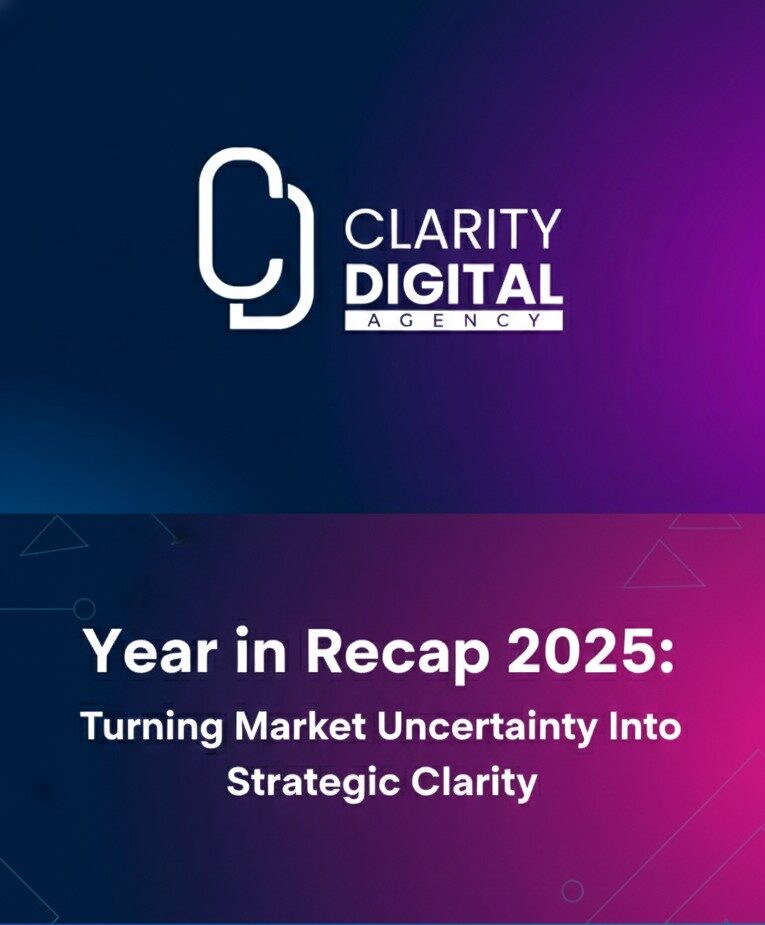Clarity Digital Agency has managed millions in Google Ads in recent years for some of the leading global tech companies. This experience gives us unique insights into the most common mistakes SaaS companies make with their Google Ads campaigns. These mistakes can drain budgets, reduce ROI, and limit the full potential of advertising efforts. Let’s explore the three biggest errors SaaS companies often make and, more importantly, how to correct them.
1. Spending Budget on “Informational Intent” Queries That Don’t Convert
It may sound straightforward, but many SaaS companies still spend significant portions of their budget on keywords with “informational intent” rather than “commercial intent.” While informational queries, such as “What is CRM software?” may attract significant traffic, they rarely lead to conversions. Instead, they often result in users who are merely seeking information but are not ready to buy.
How to Fix This:
Step 1: Analyze Non-Brand Queries
- Start by filtering out non-brand keywords from your campaigns. This helps in identifying queries that do not explicitly reference your brand but may still drive relevant traffic.
- Use “keyword text contains” filters to look for commercial intent modifiers, such as Software, Services, Provider, Company, Quote, Vendor, Solution, Best, Tool, Platform, Buy, Top, and Comparison.
- Compare these filtered keywords with ones that do not contain these modifiers to identify high-intent, conversion-ready queries.
Step 2: Segment Your Campaigns by Intent
- Divide your campaigns based on intent — commercial versus non-commercial. For example, a campaign for “employee recognition software” should not be in the same group as a campaign for “employee recognition.”
- This practice allows you to control your budget at the campaign level, ensuring that high-intent keywords do not compete with low-intent ones for the same budget, which often leads to wasted ad spend.
Step 3: Max Out Budget on High-Intent Keywords
- Expand your pool of high-intent keywords by scraping relevant software directories, competitor sites, and industry-specific forums.
- Use tools like Google Keyword Planner and SEMrush to identify new commercial intent terms that align with your audience’s purchasing mindset.
2. Overusing “Request a Demo” as a CTA
“Request a Demo” has long been the go-to CTA for SaaS companies, but it’s not always the most effective. This CTA can unintentionally create psychological friction, causing hesitation or reluctance among prospects. The word “request” implies uncertainty — people may fear rejection or a hard sales pitch that doesn’t match their current buying stage.
Alternative CTAs to Test:
- “Get Started”: This is action-oriented and low-commitment, encouraging users to take the first step without hesitation.
- “See It in Action”: Invites users to engage with your product and understand its benefits in a more interactive way.
- “Start Your Free Trial”: Emphasizes a risk-free experience, which can attract prospects who are still in the consideration phase.
These alternative can lower friction and increase the likelihood of conversion. Using data-driven insights can help determine which CTAs perform best for your audience.
3. Failing to Audit the Entire Ad Experience
Many SaaS companies focus on optimizing their ads or landing pages but neglect the overall experience that takes a user from the initial search query all the way to post-conversion follow-up. Every step of the user journey is crucial — from the search term, ad copy, landing page, form, CTA, and the follow-up scheduling process.
Key Areas to Audit:
- Search Term: Google Ads can serve your ads for irrelevant search terms, wasting your budget. Regularly audit your search term reports to ensure your ads appear for queries with the highest conversion potential.
- Ad Copy: Control your messaging.. Don’t rely solely on Google’s automated ad options, as they can dilute your brand voice by inserting keywords in ways that feel unnatural or spammy.
- Landing Page: Make sure your landing page loads quickly, offers a seamless experience, and delivers on the promise of your ad. A landing page that underperforms can significantly reduce conversions.
- Form: Simplify your forms to make them as user-friendly as possible. Consider using a two-column layout to reduce scrolling, and add copy that encourages and persuades users to complete the form.
- CTA: Experiment with different submit button text to see which is more compelling. Phrases like “Get Started” or “Unlock Your Free Trial” can increase clicks.
- Scheduling: What is the next step after conversion? Can the user immediately schedule a call or meeting? Are they added to a retargeting campaign to keep them engaged?
Avoid These 3 Common Google Ads Mistakes to Maximize SaaS Growth and Boost Conversions”
Google Ads remain a powerful tool for SaaS companies — when used correctly. The three key mistakes to avoid are: spending on informational intent keywords that don’t convert, relying too heavily on traditional “Request a Demo” CTAs, and failing to audit the entire ad experience. Refining your approach can optimize your ad spend, improve conversion rates, and ultimately drive more revenue.
Partner with Clarity Digital Agency to Drive SaaS or B2B Success Through Expert Google Ads Strategies

At Clarity Digital Agency, we have spent years perfecting the art of Google Ads marketing for SaaS, tech and B2B companies. Our team of certified experts knows what it takes to build and run successful multi-channel paid media campaigns that drive growth and ROI. Don’t leave your advertising success to chance. Partner with us to leverage our proven strategies, data-driven insights, and personalized approach to digital marketing.
Ready to see real results? Contact Clarity Digital Agency today and let’s take your Google Ads and paid media strategy to the next level.




